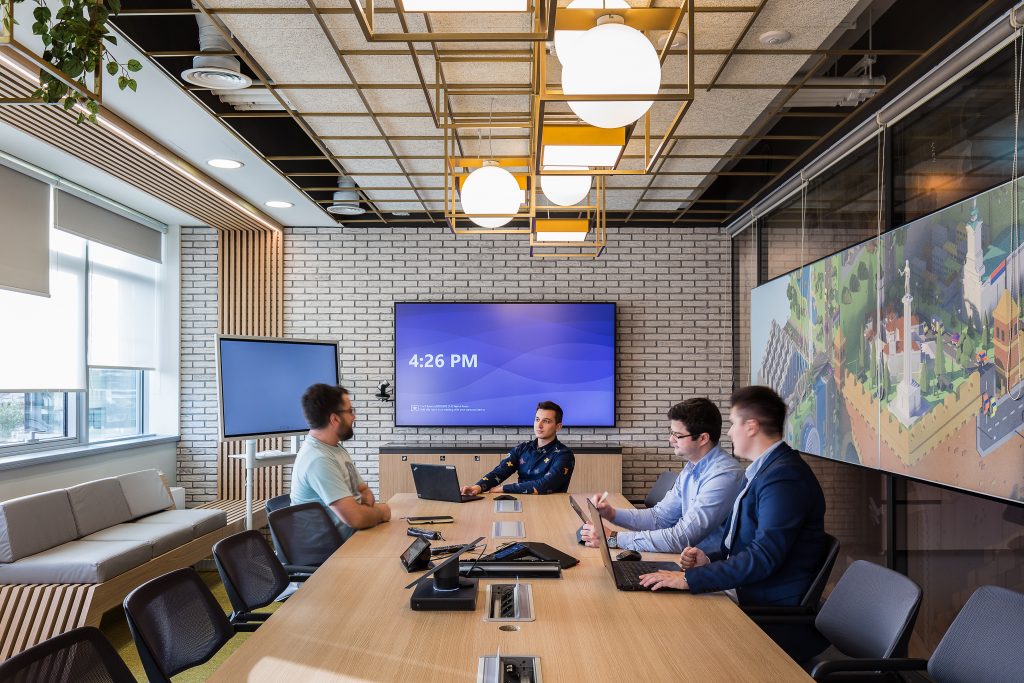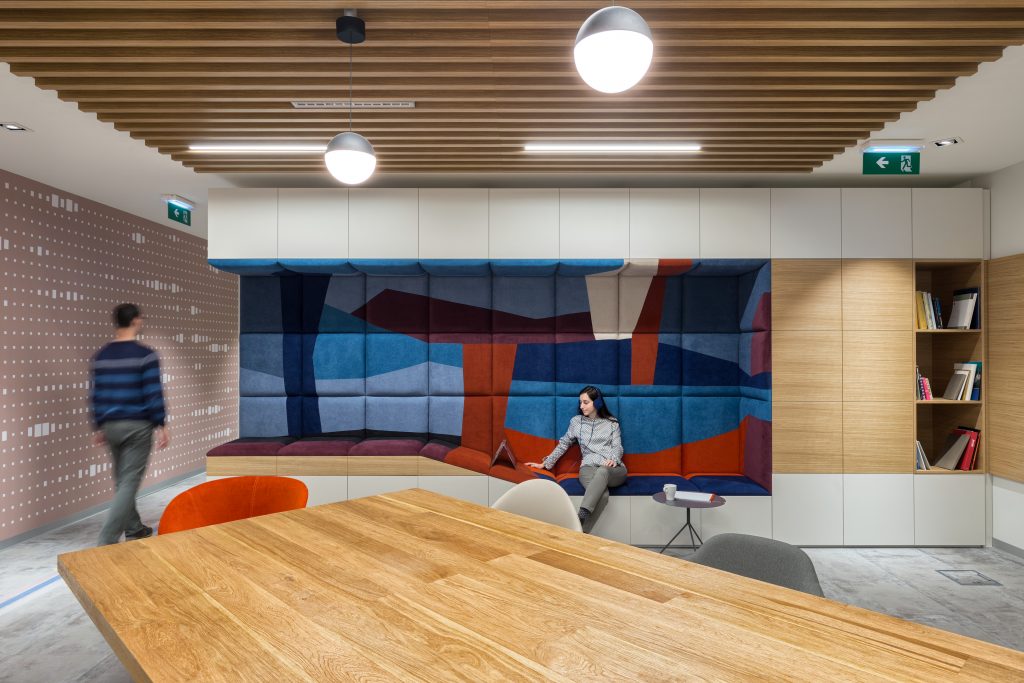Estimated reading time: 4 min
This article is the second part of our mini-series that discusses how some aspects of architecture and design will shift after the Covid-19 pandemic. In this thought piece, our second guest, Zoran Šobić, Design Manager at RMJM Serbia, reflects on the future of workplace design.
Thoughts on a Pandemic: Reinventing the Workplace
With about a fifth of the worldwide population currently on lockdown, our working habits have been strongly disrupted. It is clear that we need to think about ways to make the office a safer place. Some see remote work as the ideal solution while others will argue that remote work does not allow for sufficient social interactions. The workplace as we know it is about to be reshaped, one way or another.
The Tools
While in the last decade our focus was mainly on addressing the sustainability question, architects will now naturally shift their thinking towards ways to prevent the risks of spreading infection.
These two issues share many similarities. When addressing sustainability, architects can use two types of tools: “active” and “passive” ones. The very nature of active tools enables them to have a direct effect on the problem. They are, for example, new materials with better performances or products that save and collect energy. Passive tools are made effective by enabling efficient use of the environment. Think of the shape of a building, its orientation or solar shading systems, for instance. To get a sustainable building, you would want to use a mix of the two types of tools.
In our fight against the spread of infections, we also need to use passive and active tools in combination. But in order to do this efficiently and understand what tools are available, we need to ask ourselves the right questions and start meaningful debates.
Changes in the Workspace
The workplace is a place of social and physical interaction. We have frequent interactions with our colleagues every day.
This proximity has only been favoured by the latest design trends aiming at space optimisation. Practices such as coworking, open-plan offices, the shrinking of desk space or hot-desking, all have in common that they tend to bring people closer together physically.

However, physical proximity is precisely what we will want to avoid when the crisis is over, as the risk of contamination will be much higher.
The main question that we should ask ourselves is, therefore: how do we decrease the density of people in the workplace? Such a task would mean we need to think of alternative spaces based out of the office.
And as most of us are currently forced to work from home, implementing remote work permanently sounds like the right solution. Is it, though?
About Remote Work
Remote work appears to be the answer to all our troubles. It is flexible and you can really apply measures such as social distancing. Besides, it is teaching us a lot about work methodology and communications. Indeed, as we cannot communicate quite as easily as if we were all in the same place, we make the most of each message. We give more thought to what we write, we pay more attention during conference calls, we think more about what we do before we send it to someone else, etc. We communicate smarter and better, and probably faster.
Remote work has also taught us a lot about data sharing, data management and it has made us embrace new technologies.
However, we need to remember that remote work was implemented in a context of emergency and as a necessity rather than a will. Had it not been necessary, would we have switched to remote work? Will remote work last past the lockdown?

The Need for Guidelines
Public guidelines and clients’ expectations regulate workplace design on health, safety and welfare matters.
As we are experiencing a new normality, the situation raises issues that will call for new guidelines. New public regulations will be enacted to deal with sanitary issues and a number of elements will have to be accounted for, beyond social distancing and washing your hands. Measures will have to be taken regarding air circulation, tactile surfaces, contactless equipment, etc. Relevant ideas will come as new needs emerge.
Architects should have a crucial role to play in the discussions and debates around these new regulations. They can act as creative leaders and coordinators coming up with passive and active tools to address the issue.
However, architects, engineers and designers cannot achieve this alone. New ideas will only emerge within a diversely skilled team. The debate cannot start without policymakers, healthcare professionals and members of the public.
In a nutshell, we should set a new framework for workplace design. We have to ask ourselves the right questions before we start thinking about solutions. As some companies have now been experiencing remote work for more than two months, we are starting to see its perks. However, we also notice its drawbacks, hence the importance of not being too quick to declare it the solution.
We have to keep thinking about ways to avoid the risk of contamination in the future workplace. We need to keep exploring any potential lead, as there is still a lot to be discovered.


